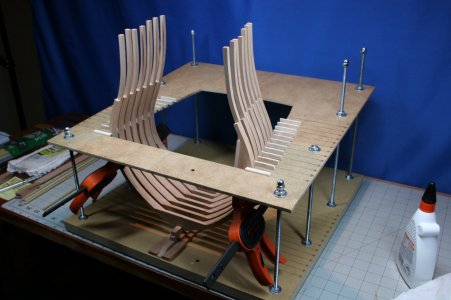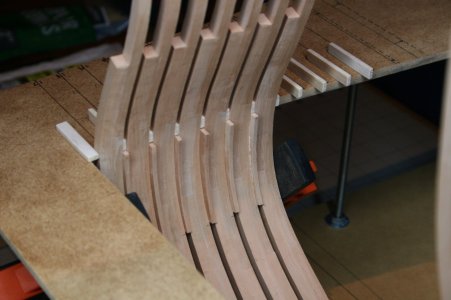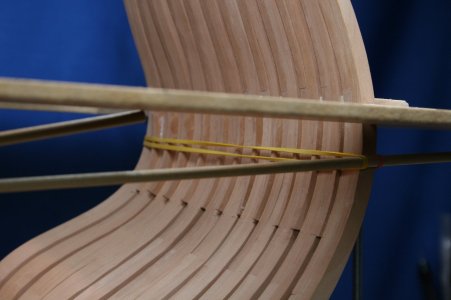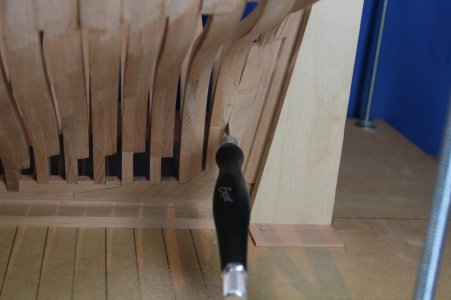Today's posting will bring this build report up to the current day...
The keel of the SP was of four segments joined in series via hooked scarf joints. Even though I am only building the stern section it happens that one of these hooked scarf joints fell within the scope of my work (I'm building a somewhat longer stern section than more typical examples).
I've made hooked scarfs by hand in the past - but have seen others fabricate them using a mill and a tilting table. I gave that a go...
While I was at it, I also milled a normal scarf into the knee of the sternpost...
View attachment 526429
View attachment 526430
View attachment 526431
An unexpected first-time success!
View attachment 526432
If you look carefully, you can see that I have also completed some preliminary shaping/tapering of the aft deadwood (and also created the rabbet at the keel and sternpost). The Saint Philippe has a (mostly) square tuck.
It is interesting to me that the monograph refers to the
deadwood (edit - should have said
rising wood) as a false keel. I'm not sure if this is a translation issue (my version of the monograph was translated from French) or if there was a different nomenclature in use at that time in history. I also learned that it was a known practice (late 17th century) to add a full keel (not a false keel) to the underside of an existing keel to mitigate hogging.
Anyway, here is the other side of the assembly with some of the details visible:
View attachment 526433
View attachment 526434
View attachment 526435
View attachment 526436
Where the rabbet is straight, I used my little mill. Where the rabbet is curved, I used a v-gouge (very carefully as not to ruin a piece with much already invested in it).
Finally (on the SP), the frames seat into notches along the rising wood. These were cut in with a mill - though there are two that will need to be done by hand because I can't get the mill where it needs to go because the sternpost is in my way).
The following images also show my solution to the fact that the frames are not perpendicular to the keel (they tip forward 1.2 degrees). Under the keel you will notice a 1.2 degree ramp... Now I can erect the frames perpendicular to the build-board and when I remove the ramp I'll have a forward tip to the frames.
View attachment 526437
View attachment 526438
Thanks for visiting!
P.S. My oldest grandson and I just finished his first ship model. Here we are showing off our work

:
View attachment 526428
 ...
...









